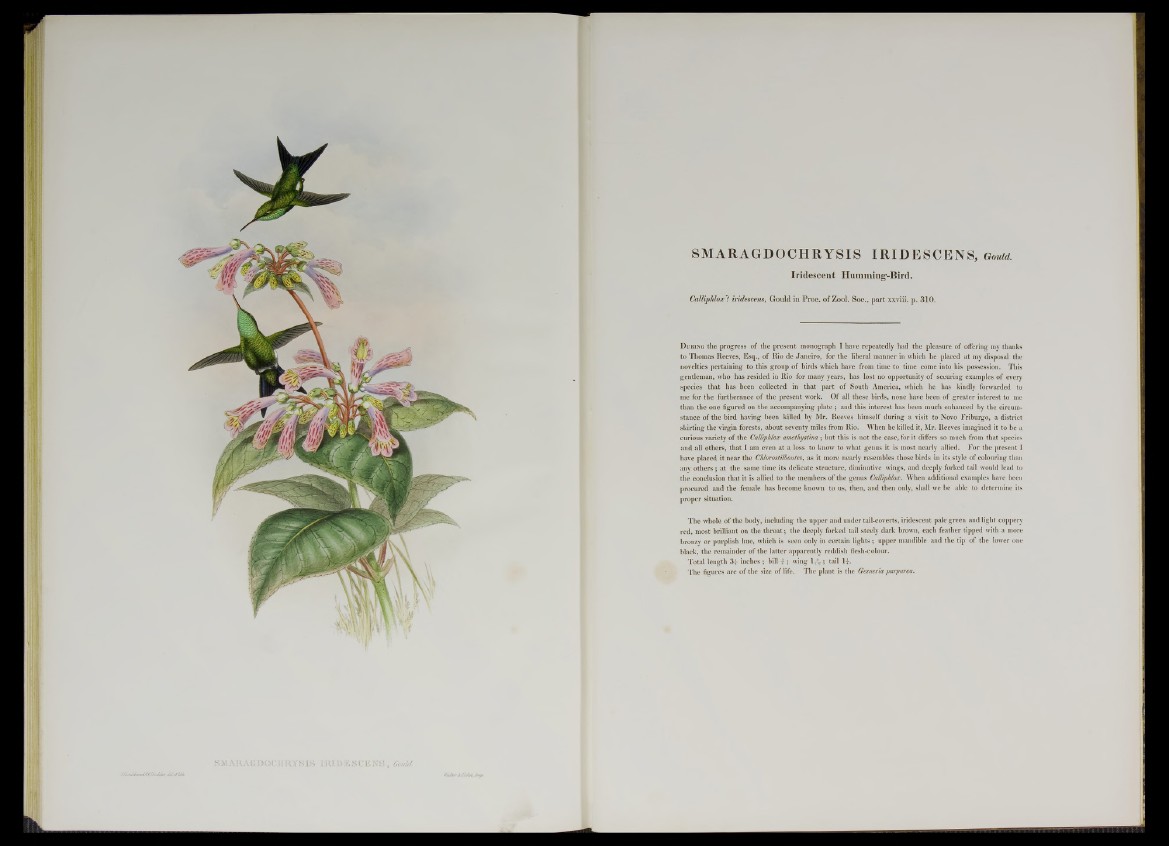
SMARAGDOCHRYSIS IRIDESCENS, Gould.
Iridescent Humming-Bird.
Calliphlox ? iridescem, Gould in Proc. o f Zool. Soc., p a rt xxviii. p. 310.
D u r i n g the progress of the present monograph I have repeatedly had the pleasure of offering my thanks
to Thomas Reeves, Esq., of Rio de Janeiro, for the liberal manner in which he placed at my disposal the
novelties pertaining to this group of birds which have from time to time come into his possession. This
gentleman, who has resided in Rio for many years, has lost no opportunity of securing examples of every
species that has been collected in that part of South America, which he has kindly forwarded to
me for the furtherance of the present work. Of all these birds, none have been of greater interest to me
than the one figured on the accompanying plate; and this interest has been much enhanced by the circumstance
of the bird having been killed by Mr. Reeves himself during a visit to Novo Friburgo, a district
skirting the virgin forests, about seventy miles from Rio. When he killed it, Mr. Reeves imagined it to be a
curious variety of the Calliphlox amethystina ; but this is not the case, for it differs so much from that species
and all others, that 1 am even at a loss to know to what geuus it is most nearly allied. For the present I
have placed it near the Chlorostilbontes, as it more nearly resembles those birds in its style of colouring than
any others ; at the same time its delicate structure, diminutive wings, and deeply forked tail would lead to
the conclusion that it is allied to the members of the genus Calliphlox. When additional examples have been
procured and the female has become known to us, then, and then only, shall we be able to determine its
proper situation.
The whole of the body, including the upper and under tail-coverts, iridescent pale green and light coppery
red, most brilliant on the throat; the deeply forked tail steely dark brown, each feather tipped with a more
bronzy or purplish hue, which is seen only in certain lights; upper mandible and the tip of the lower one
black, the remainder of the latter apparently reddish flesh-colour.
Total length 3 i inches ; bill f ; wing 1-&-; tail HThe
figures are of the size of life. The plant is the Gesneria purpurea.